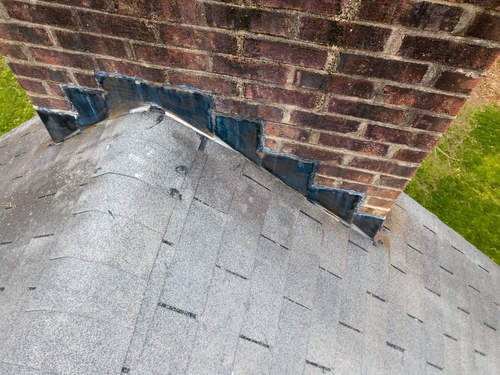Continuing the myth debunking series that we started last month (click here to learn about installing new roofs over old), this time we will look at flashing. The myth that flashing needs to be replaced only when a new roof is being installed is inaccurate and potentially harmful to the integrity of your roof. Flashing is a crucial component of a roofing system, responsible for directing water away from vulnerable areas such as joints, valleys, and roof penetrations. Here’s why the myth should be debunked:
Wear and Tear
Flashing is exposed to the elements and can degrade over time due to exposure to UV radiation, temperature fluctuations, and moisture. Even if the rest of the roof is in good condition, worn or damaged flashing can lead to leaks and water damage.
Mismatched Materials
When installing a new roof, the flashing may not match the new roofing material in terms of age, condition, or compatibility. This can create weak points in the roof where leaks are more likely to occur.
Sealant Deterioration
Flashing is often sealed with caulking or other sealants to prevent water infiltration. Over time, these sealants can deteriorate, leading to gaps or cracks that compromise the waterproofing of the flashing.
Roof Repairs
Even if a new roof isn’t being installed, repairs to the existing roof may require disturbing or removing existing flashing. In such cases, it’s essential to inspect the flashing for damage and replace it if necessary to maintain the integrity of the roof system.
Preventative Maintenance
Regular inspections and maintenance of the roof, including flashing, are essential for identifying and addressing potential issues before they lead to costly repairs or water damage. Neglecting flashing maintenance can result in more significant problems down the line.
Insurance and Warranty Requirements
Some insurance policies or roofing warranties may require regular maintenance and inspection of flashing to remain valid. Failing to replace worn or damaged flashing could void these protections.
In conclusion, the idea that flashing only needs to be replaced when a new roof is being installed is a myth that overlooks the importance of proper maintenance and the role of flashing in protecting your home from water damage. Regular inspections and prompt replacement of worn or damaged flashing are essential for preserving the integrity and longevity of your roof.
If your Orlando-area home’s roof and/or flashing needs repair or replacement, contact us at JA Edwards of America.

